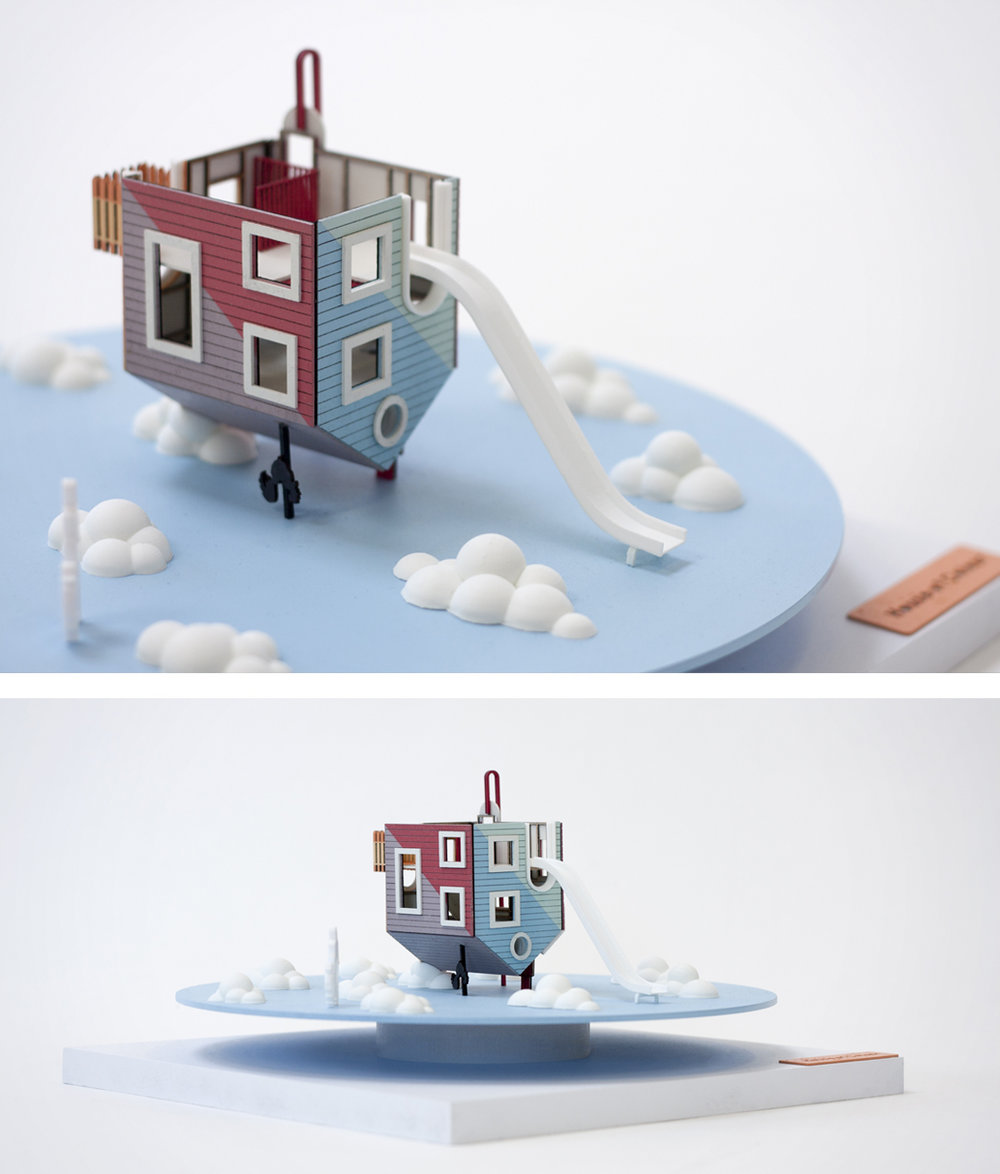In light of the exhibition we did an interview with Alma-nac to find out about their inspiration and ideas for the competition:
What appealed to you about the competition and why did you want to take part?
The House of Colour competition presented a great opportunity for the Alma-nac to further our recent and ongoing research into designing in urban/sub-urban environments for children. The open brief gave us the freedom to re-imagine what a contemporary playhouse might look like against the unique backdrop of the Green Park Village, which in turn became a direct influence in the development of a formal language. We were keen to explore the use of colour in this environment and to truly celebrate it within a domestic setting, making colour itself the principal influence in our design. Designing in this context also allowed us to explore the use of a versatile cladding product and consider its potential use for future innovation in facade treatment. Overall, we thoroughly enjoyed the process and believe that the ‘Upside-down House’ offers a playful abstraction of the Green Park Village and will encourage its residents to look at their surrounding environment through a unique lens.
Inspiration for the final design – How did the final winning idea emerge?
The ’Upside-down House’ was initially inspired by some of the surreal worlds that are created in children’s stories such as Alice in wonderland, Karlsson (Astrid Lindgren) and the recent Pixar film ʻUPʼ. From the outset, it was important that the proposal maintained the joy of a childhood play house; giving its users the ability to be ʻking of the castleʼ and become immersed in a hidden world where new stories and fairy tales can be imagined. Favourite elements such as tunnels, slides, nets and ladders exist against a slightly strange backdrop which forms the basis of these adventures. Whilst displaying some recognisable components associated with childrenʼs play, the house is not intended to appear out of place in its surrounding context; instead it draws on the formal language of Green Park Village and borrows architectural motifs from that context. We believe that the distortion and reorientation of these elements brings an added sense of surreal playfulness.
Why did you choose HardiePlank® cladding for the final design (aside from the obvious answer of us being the competition sponsor?)
Our decision to incorporate HardiePlank® cladding into the final design was primarily driven by the product’s versatility and durability. When built, it’s important that the facade material is of the highest quality and thus able to withstand the varying weather conditions whilst remaining fade resistant. Naturally, the hard-wearing nature and low maintenance aspect of the Hardie® Plank cladding makes it perfect for an outdoor play facility with an added requirement for product robustness. The final design utilises the extensive range of Hardie® Plank cladding colours to help distinguish one elevation from the next and tie in the associated items of play to their corresponding facades. For example, the ocean blue facade ties into the gloss blue slide which acts as a giant tongue out of the front door and on to the carpet of sky below.

How do you feel about the final design being realised on the Green Park Village site?
Our participation in the competition was always heavily influenced by the potential of seeing the design realised in the Green Park Village with the playhouse(s) becoming a key part of the local identity. Throughout the design process, we worked closely with a structural engineer to ensure that if the project was selected to be built, the surreal nature of an ‘Upside-down House’, precariously balanced on its chimney, could be achieved in construction. We are excited to continue this design process and work closely with James Hardie products to hone the finer details of the colourful playhouse facades and internal finishes. Whilst ‘The Upside Down House’ is designed as a one-off play area, we see potential for a family of upside down houses and structures to be dotted throughout the village that adopt a similar language, appearance and theme. They would become synonymous with the identity of Green Park Village.